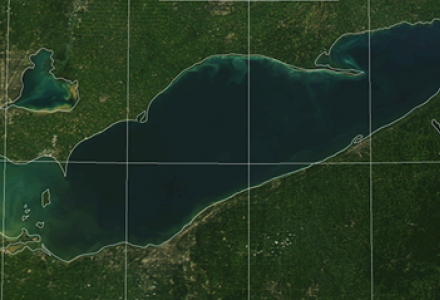
The IJC has completed the first phase of a project to recommend water quality objectives and alert levels for the Rainy-Lake of the Woods water system. If finalized and approved by the Canadian and US governments, these guidelines would help protect water quality and the health of the ecosystem in the basin.
Water quality objectives are targets agreed to by Canada and the United States. Alert levels are advisory and triggered if certain conditions are reached, then brought to the attention of both governments.
The Rainy River has had water quality objectives since 1965 for sewage, slime bacteria, fecal bacteria and dissolved oxygen levels. These haven’t been updated since 1965, however, and the rest of the system doesn’t have any such objectives. The IJC’s Rainy-Lake of the Woods Watershed Board continues to report on these objectives, as well as alert levels established in the 1990s.
Since some of the objectives are for parameters that are no longer issues in the Rainy River, and because the broader watershed doesn’t have any objectives or alerts, the board has been working on updating or expanding both, based on the needs of the watershed. The IJC contracted out this first phase of the project and is now reviewing the recommendations and considering an approach for phase two. The first phase of this project wrapped up in 2019 with submission of a draft report and a public comment period.

The report identified five key issues to focus on. The first is nutrients. Since the Rainy River has been cleaned up substantially since the 1960s, the report suggests that existing water quality objectives be replaced with a specific one for phosphorus, given the concern over excessive amounts of that nutrient contributing to algal blooms, especially on Lake of the Woods. The report notes that it’s been a problem in the entire Rainy system, and proposes different phosphorus guidelines for different parts of the Rainy-Lake of the Woods watershed.
The other four key issues would be addressed as alert levels under the report’s proposal. The first of these, contaminants, is a shorter list of routinely monitored substances that should focus regular reporting efforts.
Two proposed alert levels involving climate change and aquatic invasive species assessment, aren’t readily measurable by grabbing a water sample. So the report proposes using ecosystem health indicators (such as water temperature to indicate climate change) to identify major risks to the watershed. These risks would then be used as alert levels.
The final proposed alerts would target erosion and water levels. Measuring the effects of erosion would require computer models, which would be developed in the second phase of this project.
The board received public comments on its draft report in the fall of 2019. These were generally supportive, according to Kelli Saunders, project manager, adding that some commenters suggested giving more consideration to mining impacts under contaminants and the survivability of invasive species. Others wanted to know more about how monitoring for these new objectives and alerts would work – something that will be developed in phase two of the project, said Saunders, also international watershed coordinator for the Lake of the Woods Water Sustainability Foundation.
The board anticipates that the second phase of this project will start soon; no official timeline has been set as of this writing. Phase two will define how each of the objectives and alerts will be measured. Saunders said that will involve consulting with government agencies, indigenous communities and the broader public to discuss ecosystem health objectives that make sense for the watershed.
Once the full project is completed and approved by Commissioners, the IJC intends to send the final report to governments; it would be up to Canada and the United States to implement the recommendations. A timeline has not been set for phase two or a final list of recommendations.

Kevin Bunch is a writer-communications specialist at the IJC’s US Section office in Washington, D.C.



